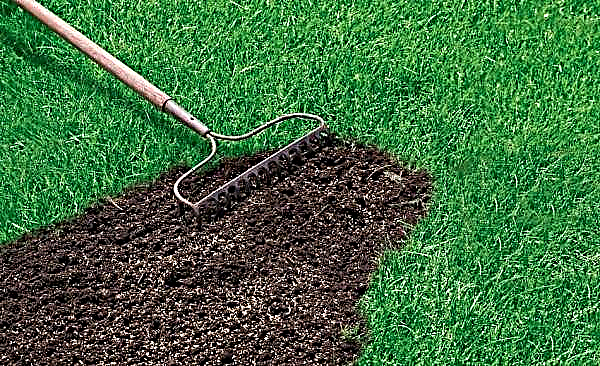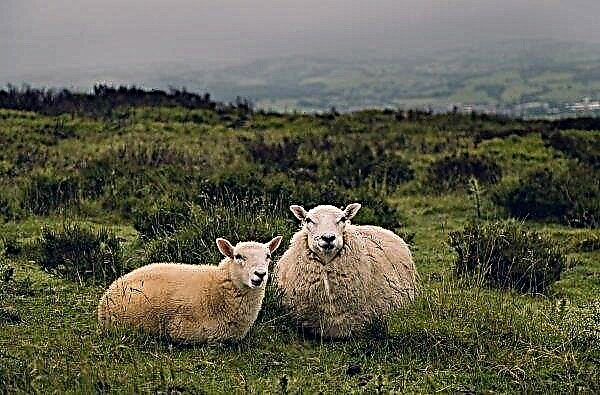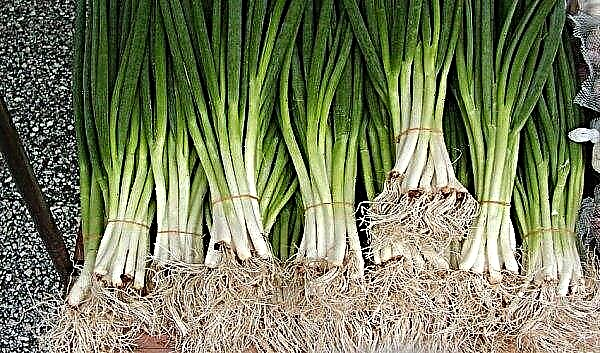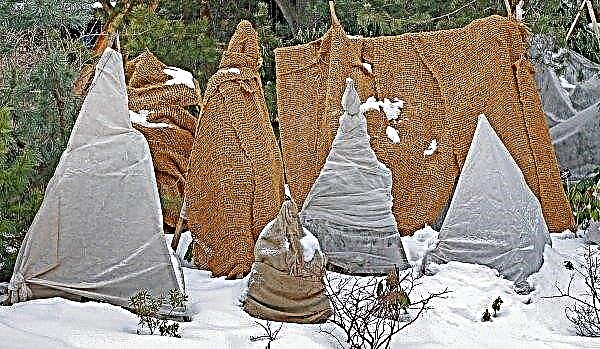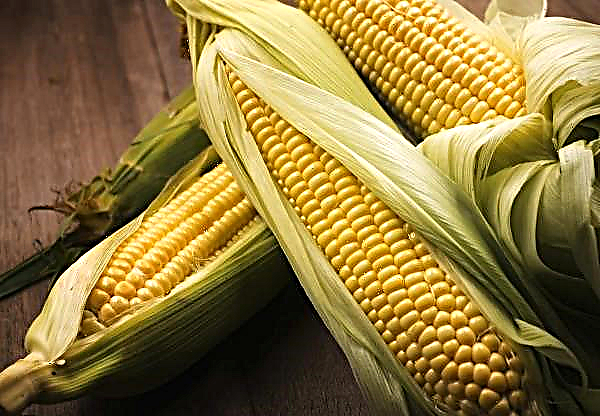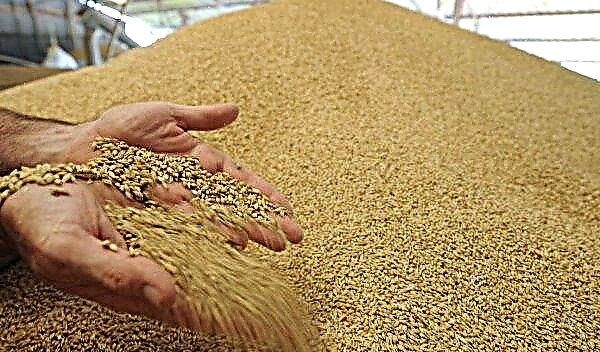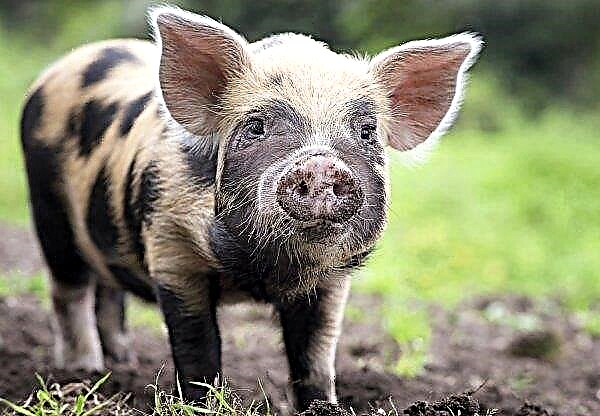Today, people breed a huge variety of different breeds of rabbits. However, for lovers of beautiful fur in the first place is the chinchilla look. Outwardly, it practically does not differ from chinchillas, but it is much more affordable for the mass consumer. This article will discuss this breed and the features of their maintenance and breeding.
Origin history
The breed was bred by the French in 1910 by crossing wild rabbits with the Baverenovsky and Russian ermines. They did this in order to create competition for expensive imported furs. The first time the general public saw them in Paris at an exhibition that took place in 1913.
After they began to spread around the world. In England, breeders decided to increase the mass of the animal and crossed it with rabbits of giant breeds.
On our territory, its own variety of this breed was bred. Soviet chinchilla was the result of mixing chinchilla animals and the White Giant breed. It happened in the 60s of the last century.
Until now, these rabbits have not lost their popularity due to their high profitability, unpretentiousness and prolific variety.
Did you know? Rabbits sweat only through their paws. This is important to consider when deciding whether to find a rabbit's cage so that the animal does not receive heat stroke.
Description of appearance
The most common breeds are:
- Ordinary;
- Soviet;
- American
- Giant (British).
| Appearance | Description |
| Color | silver-blue with a dark veil of the outer hairs |
| Torso | small up to 60 cm long |
| Head | medium size, round |
| Eyes | large, blue or brown |
| The ears | oblong, highly elevated |
| Mustache | small, gray |
| Neck | small with thick fur |
| Paws | massive, muscular |
| Tail | small, black |
| Claws | long, require trimming |

Temperament
By the nature of the eared, they are calm and friendly. They are smart and therefore easily adapt to new conditions of life and get used to the people caring for them. However, during puberty, males are quite aggressive towards their peers. Rabbits show excellent maternal qualities.
Productive qualities
First of all, the breed was conceived as a sandpaper, and meat was only a pleasant addition. However, as breeding practice shows, today breeders have two goals at once - obtaining skins and meat. The quality of the fur of this breed is on average 1.5 times better than that of ordinary rabbits.
In addition, it has such a shade that for the manufacture of fur coats does not require painting, unlike other breeds. The slaughter yield of a meat indicator in a 4-month-old rabbit reaches 57%. Despite the fact that it is slightly lower than that of ordinary rabbits (61%), this is just a “nice bonus” when raising animals for the sake of beautiful fur.
The white-giant breed is also referred to as meat-and-sand breed of rabbits.
Advantages and disadvantages of the breed
Rabbits of this breed are considered universal, with strict observance of food technology, good indicators are obtained in all directions.
- These pets have the following benefits:
- Elasticity and high density of wool are very popular in the manufacture of high quality fur products.
- They adapt well to a variety of conditions.
- Animals are unpretentious to feed.
- Fairly fast weight gain and a good weight indicator.
- Thanks to their excellent quality, furs are highly valued.
Despite the small list, the disadvantages are even less.
- These include:
- low meat yield during slaughter;
- small offspring;
- require a lot of space for breeding;
- eat a lot of feed.
Did you know? The rabbits have 28 full teeth. However, behind the large front, tiny teeth are present.
What to look for when buying
Having decided to have a chinchilla rabbit, you should know the basic rules of choice. It is better to contact a specialized breeding farm, where you will be provided with a full package of documents.
If this is not possible, then do the following:
- Inspect the animal in its natural environment. How he behaves, that he will talk about health.
- The coat should be healthy and without any external flaws.
- Find out the age of the rabbit and pay attention to its gender.
- Permanent color appears only after the first molt. You can determine its completion by white blotches on the stomach and under the eyes, and on the ears and tail - black.
The best individuals are born in early spring, on the basis of this, it is recommended to acquire a rabbit at this time of year.
Chinchilla Rabbit Content
Like any other animal, chinchilla rabbits need certain conditions and adherence to feeding rules. This is what will be written below.
Home improvement
Good adaptation allows you to breed in different climatic conditions, while it can be kept in cells or sheds.
Important! There are two maintenance rules at different times of the year. In hot weather, the cage should not be very hot, and the animal should have a place where it can hide from direct sunlight. In the cold season, the rabbits must be in a room protected from drafts.
Proper breeding implies compliance with the following rules:
- Cells should be elevated approximately 75 cm from the ground. The minimum size is 120 * 60 * 50 cm. A larger cage can accommodate two residents at once, however it is important to make a partition so that everyone has a personal place.
- The temperature in the room where rodents live should not exceed +20 ° С and drop to a level below +13 ° С.
- Housing should be well ventilated, but there should be no draft or a sharp change in temperature.
- Cleanliness must be at a high level so that rabbits do not begin to get sick with various infectious diseases.
- Sunlight should be sufficient for the normal functioning of the animal. In this case, it is important to avoid direct sunlight, and in the winter season to increase the amount of light so that immunity does not decrease, and the animals continued to lead an active lifestyle.
- In the rabbits' cages they build nests of wood. Thanks to openings in the floor, waste products will fall out themselves. In addition, you need to add a food tray and a water tank.

How and what to feed
Nutrition in rabbits is quite diverse. The main thing is to maintain a balance between dry feed and vegetables. Animals love greens and hay, the second can be used to form litter in a cage. In addition, the diet can be varied with root crops, carrots and silage.
Cabbage is given in a small amount so as not to provoke digestive upsets. In order to sharpen your teeth, you can give young twigs or bark. You can add concentrates, food waste, as well as vitamins and minerals.
You can feed the animal often, but give food in small portions so that it does not remain in the cage and does not spoil.
In the summer, there is quite enough greenery, absorbing which animals will receive enough vitamins. In winter, there may be a lack of vitamins, which will lead to negative consequences and a general weakening of the body.
The following drugs are most effective for the prevention of vitamin deficiency:
- Chiktonik;
- Threaded;
- E-Selenium.
 It is strictly forbidden to give the rabbit the following food:
It is strictly forbidden to give the rabbit the following food:- sweet, spicy and sour;
- products of poor quality or expired;
- alfalfa, peas and other legumes;
- red cabbage;
- poisonous herbs (buttercups, bleached, lily of the valley, etc.).
It is important not to forget about water. It is always in sufficient quantity and always fresh must be in the cage or in the free-range enclosure.
Care and hygiene
Ears are not demanding care, but they need regular cleaning of the cage and replacement of the litter. It is recommended to carry out general cleaning at least once a week, however daily cleaning of the dirt will also not hurt.
Vaccination is carried out one month after birth and after 3 months. repeat the procedure. More with good levels of vaccination is not required.
Chinchilla rabbits do not need special conditions.
The main thing is compliance with elementary care rules, which include the following actions:
- maintaining cleanliness in the cells, in addition to cleaning, you need to change the litter;
- provide animals with a balanced diet;
- carry out feeding regularly;
- constant access to drinking water;
- in summer, cells shade from the sun;
- Protect from wind and drafts in winter.
Breeding Features
A female’s sexual hunt is determined by her behavior: she becomes restless, plucks down in the abdomen, and applies hay to the sleeping compartment. Confirmation is also the position of the rabbit during her stroking, she stretches the back as much as possible and raises the croup. All these signs indicate that it can be mated.
Confirmation is also the position of the rabbit during her stroking, she stretches the back as much as possible and raises the croup. All these signs indicate that it can be mated.
For confidence in the onset of pregnancy, it is recommended to wait twice for the male to female. Control mating is carried out a week after the first. Check the result can be as follows: the rabbit will not let the male in her case in pregnancy.
To get a good offspring, the female needs to be properly fed by adding hay, root crops or concentrates to the diet. In addition, add meat, bone or fishmeal, as well as chalk.
Selection Principles for Reproduction
To obtain a full and completely healthy offspring, it is recommended to carry out some selection of animals before breeding.
It is based on the following principles:
- Do not mix the blood of close relatives;
- animals are carefully examined;
- the age of the couple should be at least 6 months;
- do not allow rabbits that last time gave poor offspring or refused to care for him;
- a pair is formed based on age characteristics;
- it is recommended to take a male and a female with an identical coat color.
Care and feeding of young animals
Immediately after the appearance of the offspring, it is not recommended to rush and touch the rabbit ahead of time, as she can refuse the kids. Early weaning from the mother can lead to subsequent weakness and even death. Young animals are often planted in another cage 1.5 months after birth. At this time, the best food is:
At this time, the best food is:
- dandelion leaves;
- hay;
- concentrated feed.
All feed is recommended to be crushed carefully.
Upon reaching 2 months, rabbits are divided by gender to avoid early mating.
Important! Feeding babies the rabbit is recommended to extend up to 3 months, this will increase the immunity of young animals.
Vaccination
To prevent rabbits from getting sick, they are vaccinated against myxomatosis and viral hemorrhoidal disease. The first injection is carried out when the animal reaches the age of one month. The second time vaccination is carried out after 3 months. More adult animals are vaccinated once a year.
The remaining injections for diseases such as salmonellosis, rabies and listeriosis are given as needed. In general, chinchilla rabbit has a fairly strong immunity, so there is no need for additional vaccination. Mandatory is only quarterly deworming.
In general, chinchilla rabbit has a fairly strong immunity, so there is no need for additional vaccination. Mandatory is only quarterly deworming.
As you can see, caring for a chinchilla rabbit is not complicated. However, they, like any other pets, will require attention and care from you, for which they will repay you with their devotion and give you a good mood.

